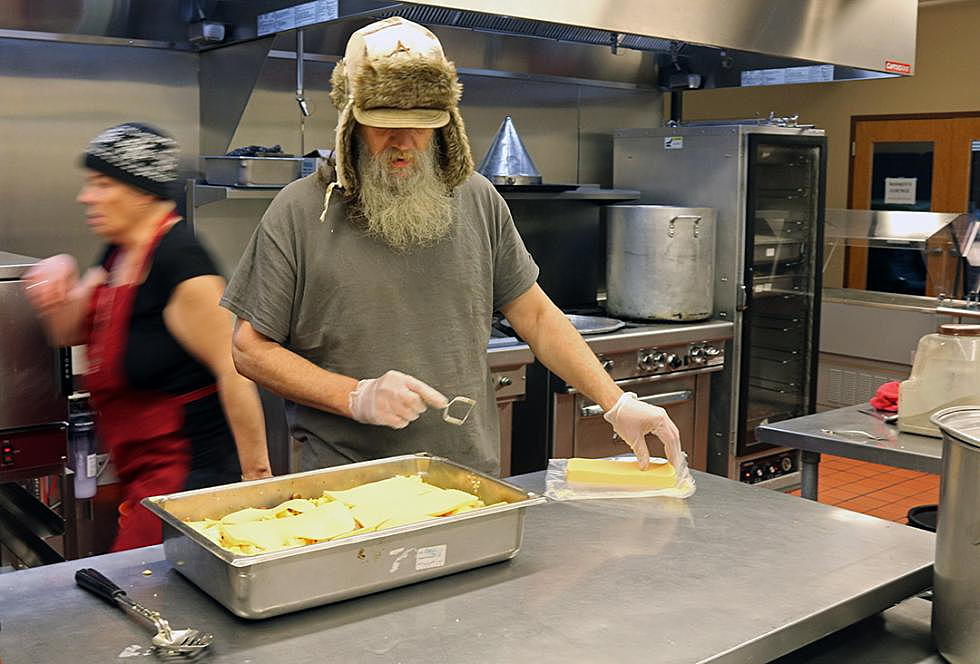
Overcrowded: Missoula homeless shelter to set cap on number of overnight residents
The latest bout of cold weather has left the Poverello Center bursting at the seams, and while the new facility was built to serve a larger capacity that its predecessor, it has since run out of space, forcing staffers to make difficult choices.
Amy Allison-Thompson, the shelter's executive director, said the Poverello slept 205 people on a single day this week, a record that's well beyond what the center can comfortably accommodate.
Now, for the first time in its 40-year history, the Missoula shelter has been forced to adjust its policies by turning people away.
“We do know at this point that we'll be setting a cap,” Allison-Thompson said Friday. “We're discussing the logistics on how we carry that out, and in a way that's most equitable. We've already begun preparing the folks that are staying here.”
Allison-Thompson said the shelter's 205 residents on Monday – when temperatures dipped near zero – was 25 percent over capacity. As a result, 90 clients slept without a bed and 30 slept on the center's concrete floor without a mat.
The shelter has remained near those numbers all week, and some have taken to the Union Gospel Mission's warming center for relief.
“We know the recent cold snap creates fatal conditions for anyone sleeping outside or in a vehicle,” Allison-Thompson said. “At this point, when the building is this full, tensions tend to run a little higher. Our concern is with making sure we have enough staffing. It's why we need to set a cap.”
The uptick in shelter residents began late last year as it began sleeping 180 people per night on average. That marked an increase of 20 to 30 people over the same time the year before.
The influx of residents has raised a number of concerns, from the safety of staff and residents to the nonprofit's long-term budget.
“It's a safety concern for staff and clients, but it's also a comfortability issue for the clients,” said Keegan Flaherty, president of the shelter's board of directors. “Our No. 1 concern at all times is safety. No decision has been made to turn people away. It's day-by-day, but those discussions are taking place.”
The shelter has notified local officials of the situation, including the mayor's office and the police department, as well as the Missoula City Council and Missoula County commissioners. It has also launched a community-wide call for help.
So far, Missoula Federal Credit Union, Community Medical Center and Missoula Rises, among other local organizations, have issued a call for items ranging for blankets and coats to cash donations.
“When we used to top 150 people, all our supplies got depleted pretty fast, but when you're serving 200 people a night, you go through it in a week,” said Flaherty. “Our power bill will probably be 50 percent more than normal. Most nonprofits get pretty tight cash-wise in the summer and that's our fear, that we'll get tight in the summer because of the winter. We've just never experienced this many people.”
The Missoula shelter isn’t alone in dealing with the state’s growing homeless population, though the figures depend on how you break them down. The rate of homelessness in Montana inched up nearly 8 percent this year over last year, though the number has fallen overall since 2010.
The figures, based on the U.S. Department of Housing and Urban Development’s latest “point-in-time” survey, represent what shelter staff already know. Use of the Poverello is on the rise this winter and it’s straining the center’s ability to maintain basic services, whether that’s the cost of providing a hot shower or nearly 500 daily meals.
“This is not just a Poverello problem – it's a Missoula problem and a human problem,” said Allison-Thompson. “We all have to come together and try to find community-wide solutions.”
